Background
Burning mouth syndrome (BMS) is an idiopathic condition characterized by a continuous burning sensation of the mucosa of the mouth, typically involving the tongue, with or without extension to the lips and oral mucosa. Classically, burning mouth syndrome (BMS) is accompanied by gustatory disturbances (dysgeusia, parageusia) and subjective xerostomia. By definition, no macroscopic alterations in oral mucosa are apparent. Burning mouth syndrome (BMS) occurs most frequently, but not exclusively, in peri-menopausal and postmenopausal women.
Burning mouth syndrome (BMS) is a clinical diagnosis made via the exclusion of all other causes. No universally accepted diagnostic criteria, laboratory tests, imaging studies or other modalities definitively diagnose or exclude burning mouth syndrome (BMS).
Various attempts to classify burning mouth syndrome (BMS) based on etiology and symptoms have been made. In a classification by etiology or cause, idiopathic burning mouth syndrome (BMS) is considered “primary BMS” (or "true BMS"), whereas “secondary BMS” has an identifiable cause. For the purposes of this article, we will use these terms.
Another classification of burning mouth syndrome (BMS) is based on symptoms, stratifying cases into 3 types, as follows:1
- Type 1 burning mouth syndrome (BMS): Patients have no symptoms upon waking, with progression throughout the day. Nighttime symptoms are variable. Nutritional deficiency and diabetes may produce a similar pattern.
- Type 2 burning mouth syndrome (BMS): Patients have continuous symptoms throughout the day and are frequently asymptomatic at night. This type is associated with chronic anxiety.
- Type 3 burning mouth syndrome (BMS): Patients have intermittent symptoms throughout the day and symptom-free days. Food allergy is suggested as a potential mechanism.
Burning mouth syndrome (BMS) is likely more than one disease process, and the etiology may be multifactorial. The ambiguous definition of burning mouth syndrome (BMS) makes evaluation of prognosis and treatment difficult.
Anatomy and Physiology
The oral cavity is comprised of mucosa, glands, muscle, teeth and sensory receptors. The sensory capabilities of the oral cavity include pain, temperature, proprioception, light touch, vibration, and taste. Efferent innervation supplies muscles of mastication, the tongue, and autonomic reflexes.
Somatosensory innervation
Somatosensory innervation is provided by the maxillary (V2) and mandibular (V3) branches of the trigeminal nerve and the glossopharyngeal nerve (IX).
The V2 branch supplies the following:
- Hard and soft palate
- Mucosa of the maxillary vestibule
- Upper lip
- Maxillary teeth
- Maxillary periodontal ligaments
- Maxillary gingiva
The V3 branch supplies the following:
- Buccal mucosa
- Anterior two thirds of the tongue (lingual branch)
- Mandibular teeth
- Mandibular periodontal ligaments
- Mandibular gingiva
- Anterior mandibular vestibule
- Lower lip
The glossopharyngeal nerve innervates the following:
- Posterior third of the tongue
- Posterior wall of the pharynx
Of interest in relationship to burning mouth syndrome (BMS), the lingual branch of the mandibular nerve (V3) supplies the anterior two-thirds of the tongue. It has superficial and deep fibers, which have small receptive fields and low thresholds, creating a highly sensitive sensory field. Pain and temperature in the mouth are sensed by both simple free nerve endings and by more organized nonmyelinated endings. Sensory innervation of the periodontal ligaments provides proprioceptive information about pressure on the teeth and oral stereognosis (perceiving the form of an object) as well as jaw opening and salivation reflexes.
In general, the anterior and midline portions of the oral cavity tend to be more sensitive than the posterior and lateral aspects to discriminatory touch and warm temperatures. Cold temperatures are perceived more uniformly throughout the mouth.
Trigeminal neuroanatomy
The trigeminal nerve enters the brainstem at the pons and bifurcates in the principal sensory nucleus. There, the different types of fibers in the trigeminal nerve follow different courses, as follows:
- Discriminatory tactile fibers synapse in the principal sensory nucleus, cross midline, and ascend in the medial lemniscus to the ventroposterior medial nucleus of the thalamus (VPM).
- Afferent proprioceptive fibers of V3 from masticatory muscles (masseter, temporalis, medial and lateral pterygoids) pass through the principal sensory nucleus. Their cell bodies are located in the mesencephalic nucleus superior to the principal sensory nucleus, and they synapse in the motor nucleus medial to the principal sensory nucleus.
- Nociceptive (pain and temperature) fibers pass through the principal sensory nucleus and descend before synapsing in the large spinal trigeminal nucleus of the medulla. The spinal nucleus contains 3 subnuclei from cranial to caudal: oralis, interpolaris, caudalis. Generally, pain fibers synapse in the subnucleus caudalis prior to crossing and ascending in the spinothalamic tract.
Of importance with respect to burning mouth syndrome (BMS), the spinal nucleus may be important in central sensitization of peripheral trigeminal nerve fibers via alterations in NMDA (N-methyl D-aspartate) receptors.
Taste
Chemoreceptors for taste are supplied by the chorda tympani branch of the facial nerve (VII) to the anterior two thirds of the tongue, while the posterior third of the tongue and pharynx are supplied by the glossopharyngeal nerve (IX). The chorda tympani is probably most responsible for taste alterations in burning mouth syndrome (BMS). A small population of taste receptors on the soft palate is supplied by the greater superficial petrosal nerve branch of the facial nerve. The larynx bears some taste receptors that are innervated by the superior laryngeal nerve. Trigeminal nerve (V) endings also supply some sensation of taste. They respond more to chemically active compounds such as ammonia, menthol, and capsaicin. Noxious stimuli can stimulate salivation and the cough reflex via these trigeminal afferents.
Salivation
Mechanical and gustatory stimuli incite parotid, submandibular, and sublingual salivary flow. In particular, stimulation to the anterior tongue is effective in activating submandibular and sublingual glands, while posterior lingual stimulation is more effective at engaging parotid flow. Ions present in saliva, particularly sodium, produce continual low-level stimulation of taste receptors.
In theory, the content of saliva may affect sensitivity of taste receptors. This may explain how medications and metabolic conditions alter taste perception (dysgeusia) or produce novel tastes, such as bitter or metallic tastes in the mouth (parageusia.) Acute decreases in the quantity of saliva do not appear to affect gustatory sensitivity; however, chronic deprivation (as in Sjögren Syndrome or after radiation therapy) does appear to result in decreased sensitivity of receptors by trophic effects.
Pathophysiology
The pathophysiology of burning mouth syndrome (BMS) is not understood.
It was originally considered a psychogenic illness; however, a neuropathic mechanism for burning mouth syndrome (BMS) is currently favored. This is based on objectively measured abnormalities of physiologic responses of the trigeminal nerve in burning mouth syndrome (BMS) patients.2,3 The differentiation between a peripheral versus a central etiology has not been determined.
One small study proposed that unilateral chorda tympani (taste) hypofunction results in lingual nerve (somatosensory) hyperfunction by disruption of a centrally mediated equilibrium between the two.4 Observation in other conditions has shown that when a sensory circuit loses afferent signals that hyperactivity may result in hallucinatory sensations. Examples of this include phantom limb sensation following amputation and tinnitus in hearing loss. It would tend to account both for pain and for gustatory disturbances in burning mouth syndrome (BMS). Metallic or sour tastes are considered symptomatic manifestations of an understimulated gustatory circuit while understimulated sensory circuitry manifests burning sensations. The cause of this proposed neuropathy is unknown.
Studies focusing on trigeminal nerve alterations have found both hypersensitivity and hyposensitivity as well as large and small fiber neuropathy.5,3,2,6 These studies suggest that burning mouth syndrome (BMS) may have multiple etiologies producing similar symptoms.
Xerostomia in burning mouth syndrome (BMS) is likely related to neuropathy, rather than glandular dysfunction. In studies of burning mouth syndrome (BMS) patients in comparison to controls, differences in salivary content have been documented, but no differences in salivary quantity or flow have been identified.7,8
Burning mouth syndrome (BMS) has been associated with oral parafunctional habits such as bruxism, clenching, and tongue thrusting. The bruxism and clenching are increased with anxiety, which is also associated with burning mouth syndrome (BMS). Although psychogenesis is no longer regarded as the primary cause, it may exacerbate symptoms. Whether burning mouth syndrome (BMS) has a neurologic abnormality in common with parafunctional behaviors has yet to be adequately investigated.
Epidemiology
Good epidemiologic data documenting incidence and prevalence of burning mouth syndrome (BMS) are lacking. Statistical values vary widely and are likely affected by variable definitions of burning mouth syndrome (BMS).
The overall prevalence is roughly 4%.9 Women are 3-7 times more likely than men of a similar age to experience burning mouth syndrome (BMS) symptoms.9,10 Burning mouth syndrome (BMS) is rarely observed in patients younger than 30 years of age and prevalence may increase from 3- to 12- fold with increasing age.9 No racial or ethnic predilections have been reported.
History
History is the cornerstone of diagnosis. Although burning mouth syndrome (BMS) is a diagnosis of exclusion, several elements are supportive:
- Bilateral mouth discomfort (burning/pain)
- Pain deep in the oral mucosa
- Symptoms present for at least 4-6 months
- Xerostomia
- Dysgeusia
- Symptoms that are nearly constant throughout the day
- No clear precipitating factors
- Alleviated or aggravated by drinking/eating
- Mood or personality disruptions
The absence of any of the above symptoms does not exclude a diagnosis of burning mouth syndrome (BMS).
Classically, 3 major symptoms are associated with burning mouth syndrome (BMS): pain, dysgeusia, and xerostomia. These occur nearly continuously for at least 4-6 months. The complete triad (pain, dysgeusia, xerostomia) is most commonly found in peri-menopausal and postmenopausal women, while other populations may have fewer symptoms.
Pain
Pain is typically the major symptom. The pain is described as burning, scalding, tingling, or numbness. It is bilateral, typically involving the anterior two thirds of the tongue or tip. The hard palate mucosa and lips may also be involved. The buccal mucosa and floor of the mouth are atypical sites. In patients with dentures, alveolar ridges/gingiva are common sites.
Involvement of the throat may be suggestive of allergy or gastroesophageal reflux disease (GERD). The pain may be mild to severe. It may be constant or worse at the end of the day with no pain on waking. It may or may not interfere with sleep, typically it does not. Food and drink may or may not exacerbate symptoms. Hot, acidic or spicy foods typically aggravate pain in patients who report worsening of symptoms with ingestion. Speaking may also exacerbate pain in select individuals.
Dysgeusia
Dysgeusia is present in up to 70% of cases and may take the form either of a persistent taste in the mouth or altered perception of tastes. Dysgeusic tastes may be bitter, metallic, or mixed. Alterations may take the form of decreased perception of sweetness or intensified sensation of sweet or sour flavors.
Xerostomia
Xerostomia is a symptom in up to 64% of patients. Patients may not volunteer symptoms of xerostomia but affirm it on direct questioning. Xerostomia in burning mouth syndrome (BMS) is unlikely to be objectively confirmed by quantitative tests of salivary function. Some evidence suggests differences in salivary composition;7,8 however, this relationship to symptoms of pain or dysgeusia is not clear.
Other associated symptoms and conditions
Burning mouth syndrome (BMS) may be associated with various other nonspecific symptoms.11,12 Elicit information about bruxism or clenching, which may cause headache, ear, temporomandibular joint pain, or myofascial pain in masticatory, neck, shoulder, and suprahyoid muscles that can be associated with burning mouth syndrome (BMS). Patients may not be aware of these parafunctional behaviors, but bruxism can be observed by family members during sleep, particularly if it is loud. The patient may also notice clenching if made aware. Other signs of bruxism include worn tooth enamel, tooth sensitivity, or superficial ulceration of buccal mucosa.
Tongue thrusting in patients with burning mouth syndrome (BMS) may be identified by having the patient swallow a liquid while smiling; leakage through the teeth is suggestive. Patients or family members may also report puckering or tightening of the lips during swallowing.
Mood and emotional disturbances have been associated with burning mouth syndrome (BMS). In particular, patients may note anxiety, irritability, mood changes, and other symptoms consistent with depression, including changes in appetite and decreased desire to socialize. These symptoms have not been studied in relation to sleep disruption in patients with burning mouth syndrome (BMS). Whether mood symptoms are predisposing factors or are caused by the disorder is unclear.13
Excluding secondary BMS
Because burning mouth syndrome (BMS) is a diagnosis of exclusion, inquiring about symptoms or history that may be consistent with other disorders is important. Symptoms suggestive of other underlying conditions include fatigue, hot flashes, irregular periods, vaginal dryness, mood swings, irritability, weight loss or gain, skin and nail changes, heartburn, polyuria, polydipsia, numbness or tingling in any other area of the body, neurologic symptoms, fevers, lymphadenopathy, cough, shortness of breath, or lightheadedness.
A thorough review of medical history for menopause and climactic symptoms, diabetes, thyroid disorders, anemia, vitamin deficiencies, GERD, use of dental prostheses, and neurologic and connective tissue disorders may be helpful. Reviewing medications that may cause xerostomia as well as medications implicated in BMS-like symptoms such as ace-inhibitors, angiotensin receptor blockers, and antiretrovirals is important.
Reviewing diet, alcohol consumption, tobacco, or other chew products for possible reversible causes of BMS-like symptoms is helpful. Some tooth pastes or mouth rinses containing mint flavoring may also cause or aggravate burning mouth syndrome (BMS) symptoms.
Physical Examination
In true (idiopathic) burning mouth syndrome (BMS), no clinically evident lesions should be in the oral cavity, including the most symptomatic areas. A thorough examination should be conducted to investigate alternate diagnoses.
Head and neck examination
- Oral inspection may identify any areas of atrophy (see Image 1), erythema, leukoplakia (see Image 2) erosion, or ulceration (see Image 3). Bimanual palpation of the tongue, tonsils, and floor of the mouth aid in evaluating deep tissues for masses or infections.
- Dental examination may reveal damage to enamel or worn teeth (a sign of bruxism/clenching) or protrusion of the front teeth/malocclusion (a sign of tongue thrusting).
- Palpation of the jaw, muscles of mastication, neck, shoulder, and suprahyoid muscles for tenderness suggests temporomandibular joint disorder or bruxism.
- Palpation for submental, submandibular, cervical, and supra/infraclavicular lymphadenopathy may identify signs of possible infection or neoplasm.
- Palpation of the thyroid gland may suggest thyroid disease.
Other
- Examination of the skin and nails may indicate possible nutritional deficiencies.
- Examination of the joints and skin may suggest connective tissue diseases.
- A complete neurologic examination with particular attention to sensory disturbances may be supportive of a systemic disorder, such as diabetes or B12 deficiency.
Proposed Etiologies
No consensus exists regarding a definitive cause. Rather, burning mouth syndrome (BMS) appears to be multifactorial in origin. Many of the currently proposed etiologies describe secondary, rather than primary burning mouth syndrome (BMS).
Endocrine
Menopause, whether surgical or physiological, is associated with a higher prevalence of burning mouth syndrome (BMS), and, while the mechanism is unclear, hormonal alterations in oral mucosa have been suggested as a cause. Estrogen has documented effects on oral mucosa, and deprivation may lead to atrophic changes thereby altering stimulation of the nerve endings within the epithelium.14 Alternatively, atrophic epithelia may be more prone to inflammation.
Peripheral neuropathy secondary to diabetes mellitus is a cause of secondary burning mouth syndrome (BMS).15
Immunologic
An immunologic mechanism for burning mouth syndrome (BMS) has been suggested by the observation of elevated serum ESR and salivary IgA in burning mouth syndrome (BMS) patients compared with controls.16,17
Allergies are infrequently identified in patients with burning mouth syndrome (BMS) but have been suggested as a cause of Type 3 burning mouth syndrome (intermittent symptoms). However, typically they are associated with signs of mucosal irritation. Suggested irritants include dental materials such as mercury (present in amalgam), methyl methacrylate, cobalt chloride, zinc and benzoyl peroxide.18 Components of lotions such as petrolatum cadmium sulfate, octyl gallate, benzoic acid, and propylene glycol have been implicated. Food allergens include peanuts, chestnuts, cinnamon, and sorbic acid.1 Nicotinic acid has also been suggested.
Nutritional
Deficiencies of B vitamins 1, 2, 6, and 12, as well as folate and iron, have been suggested as causes of secondary burning mouth syndrome (BMS), either from direct neurologic damage or in relation to anemia.
Neuropsychiatric
Anxiety, if present, is now considered an association or an exacerbating factor in the chronic pain picture of burning mouth syndrome (BMS).9 Cases of spontaneous resolution of symptoms after positive life events have been reported. Patients with burning mouth syndrome (BMS) may also have increased salivary cortisol relative to controls, indicative of higher levels of stress.19 A proportion of patients have anxiety centered around concerns of cancer, or cancerphobia.20 At this point, the nature of the association between burning mouth syndrome (BMS) and anxiety is not clear.
Endogenous or reactive depression has been implicated; however, depression is strongly associated with anxiety.9 Whether depression is directly connected to burning mouth syndrome (BMS) is unclear. Serotonin deficiency has been suggested as a possible mechanism for sensory alterations in burning mouth syndrome (BMS) because of its role in the descending inhibition of pain.
In addition to serotonin, alterations in dopamine transmission and nigrostriatal pathway abnormalities have been suggested as a root cause for the dysesthesia.21 Whether parafunctional habits relate to dopamine transmission is unclear.
Infectious
Oral infection has been explored, and a few microbes have been identified to be potentially more prevalent in burning mouth syndrome (BMS) patients without visible mucosal lesions: Candida, Enterobacter, Fusospirochetals, Helicobacter pylori, and Klebsiella. Candida has since been determined to be an unlikely cause of burning mouth syndrome (BMS), although other species have not been thoroughly explored.
Various cases of drug-associated burning mouth syndrome (BMS) have been reported. ACE inhibitors and angiotensin receptor blockers are perhaps the most commonly noted in case reports.22,23,24 This may be the product of an inflammatory reaction generated by increases in bradykinin (similar to the mechanism by which angioedema may result). The mechanism as it relates to burning mouth symptoms has not been determined, but kallikrein, a molecule active in the kinin pathway, may be increased in the saliva of burning mouth syndrome (BMS) patients, resulting in increased inflammation.7
Other drugs that have been reported are the antiretrovirals nevirapine and efavirenz.25,26 No clear mechanism has been proposed. L-thyroxines have also been implicated in burning mouth syndrome (BMS), although whether the medication itself or the underlying hypothyroidism is the cause is unclear.27
Burning mouth syndrome (BMS) symptoms have been noted in patients with dental prostheses.28 Local trauma (particularly in patients with parafunctional habits) has been proposed as a mechanism of secondary burning mouth syndrome (BMS). As mentioned above in Immunologic etiologies, contact dermatitis due to materials used in prostheses may also be a mechanism.
Differential Diagnosis
Distinguishing primary (idiopathic) burning mouth syndrome (BMS) from secondary burning mouth syndrome (BMS) is important. The following conditions may produce BMS-like symptoms:
- Candidiasis
- Sjögren Syndrome
- Scleroderma
- GERD
- Anemia
- Diabetes
- Vitamin deficiency (B1, B2, B6, B12, folate, iron)
- Hypothyroidism
- Multiple sclerosis
- Anxiety
- Dehydration
- Mouth breathing/nasal obstruction
- Alcohol-based mouthwash
- Medication reaction (eg, ACE inhibitors, ARBs, antiretrovirals, psychotropic, anticholinergic, clonazepam,29 chemotherapeutic agents)
- Radiation-induced stomatitis
- Aphthous stomatitis
- Contact stomatitis
- Erosive lichen planus
- Pemphigoid
- Pemphigus
- Geographic tongue
- Mandibular fracture
- Neoplasia
- Impacted teeth
- Infections of bone, teeth, or implants
- Ciguatera neurotoxin exposure30
- Chewing tobacco use
- Areca nut extract exposure31
- Leukoplakia
- Bacterial infection32
Laboratory
No laboratory tests diagnose burning mouth syndrome (BMS), but the patient’s history and examination may indicate the need for any of the following studies:
- CBC count
- Serum B vitamin levels
- Serum folate
- Serum ferritin
- Serum blood glucose (fasting or glucose tolerance test)
- Urine analysis for glucose
- TSH
- T4
- Thyroid binding globulin
- Antithyroperoxidase antibodies
- Antithyroglobulin antibodies
- Antimicrosomal antibodies
- LH
- FSH
- Sialochemistry
- ESR
- Anti SS-A, Anti SS-Ro, Anti SS-B, Anti SS-La antibodies
- RF
- ANA
Imaging
Imaging is rarely indicated but may be useful to identify specific causes of secondary burning mouth syndrome (BMS), as follows:
- CT scans of the head may be useful if a mass lesion is suspected.
- MRI of the head, brain, and/or spinal cord may assist in diagnosing mass lesions (either neoplastic or infectious) or neuropathies such as multiple sclerosis.
- Thyroid echography is useful if gross thyroid lesions are suspected.
Other Diagnostic Tests and Procedures
The patient’s history and examination should direct the use of the following tests:
- Bacterial culture (especially anaerobes)
- KOH of lingual scraping
- Fungal culture
- Biopsy of tongue or mucosa
- Sialometry
- Schirmer's test
- Laryngoscopy or endoscopy if reflux is suspected.
- Lumbar puncture with gel electrophoresis
- Patch testing for methylmethacrylate mercury, cobalt chloride, benzoyl peroxide, petrolatum cadmium sulfate, octyl gallate, benzoic acid, propylene glycol, peanuts, chestnuts, cinnamon, sorbic acid, and nicotinic acid among others.
Treatment
Studies of burning mouth syndrome (BMS) have focused more on etiology than treatment. Currently, no definitive cure exists; many treatments have been tried with variable success. Attempting combinations of therapies may be appropriate; in particular, cognitive therapy may be synergistic with other agents. Additionally, it may be worth empirically treating for other conditions that cause secondary burning mouth syndrome (BMS).
Because burning mouth syndrome (BMS) is a chronic pain syndrome, patients must have realistic expectations of the natural course of their condition. For patients with primary burning mouth syndrome (BMS), an estimated 50-66% may have improvement in symptoms after 6-7 years.9 Spontaneous remission is rare but does occur in roughly 3% of patients.33
The following treatments for primary burning mouth syndrome (BMS) have been suggested with variable evidence to support their use34 :
- Clonazepam (low-dose) dissolvable wafers (may be better than tablets)35
- Alpha lipoic acid35
- Intermittent oral capsaicin36
- Psychotherapy (cognitive behavioral modification, relaxation)35
- Topical capsaicin1
- Hormone replacement therapy
- SSRIs
- Tricyclic antidepressants
- Oral lidocaine
- Near infrared irradiation of the stellate ganglion, to inhibit sympathetic discharge and improve blood flow to the tongue in glossodynia (still experimental)37
- Laser therapy38
- Topiramate39
- Olanzapine40
Treatments for secondary burning mouth syndrome (BMS) include the following:
- Discontinuation of medications that may cause xerostomia, such as anticholinergics or psychotropics
- Substitution of medications that may cause oral burning (If an ACE inhibitor, ARB, or antiretroviral is suspected, trying another medication in the same class is reasonable.)
- Adjustment of levothyroxine dosing
- Oral nystatin
- Abstinence from smoking and oral tobacco use
- Avoidance of allergens
- Adjustment of dentures (refitting and/or substituting materials)
- Chewing sorbitol-containing gum to stimulate saliva
- Pyridostigmine, Pilocarpine, or other sialogogues
- B vitamin supplementation
- Iron supplementation
- Folate supplementation
- Neuropathic analgesics
Medications
Clonazepam (oral or wafers)
Diazepam
Amitriptyline
Nortriptyline
Doxepin
Fluoxetine
Paroxetine
Sertraline
Chlordiazepoxide
Capsaicin (oral or topical)
Olanzapine (case report with low dose)
Topiramate (case report)
Multimedia
Keywords
burning mouth syndrome, BMS, stomatodynia, stomatopyrosis, sore mouth, oral dysesthesia, burning tongue syndrome, sore tongue, glossopyrosis, glossodynia, burning sensation
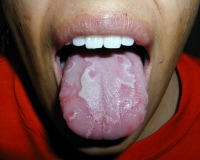
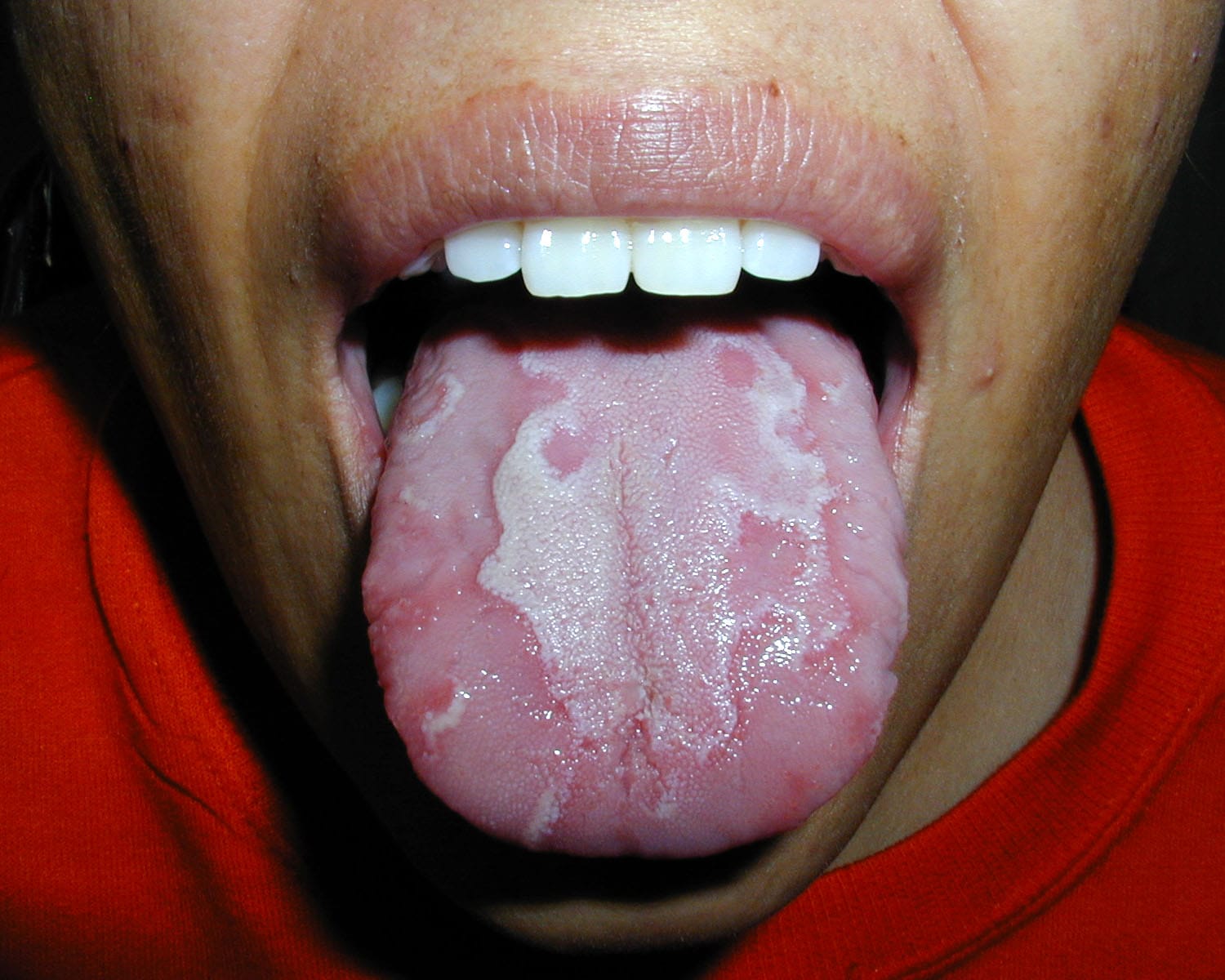
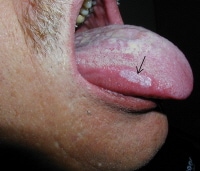
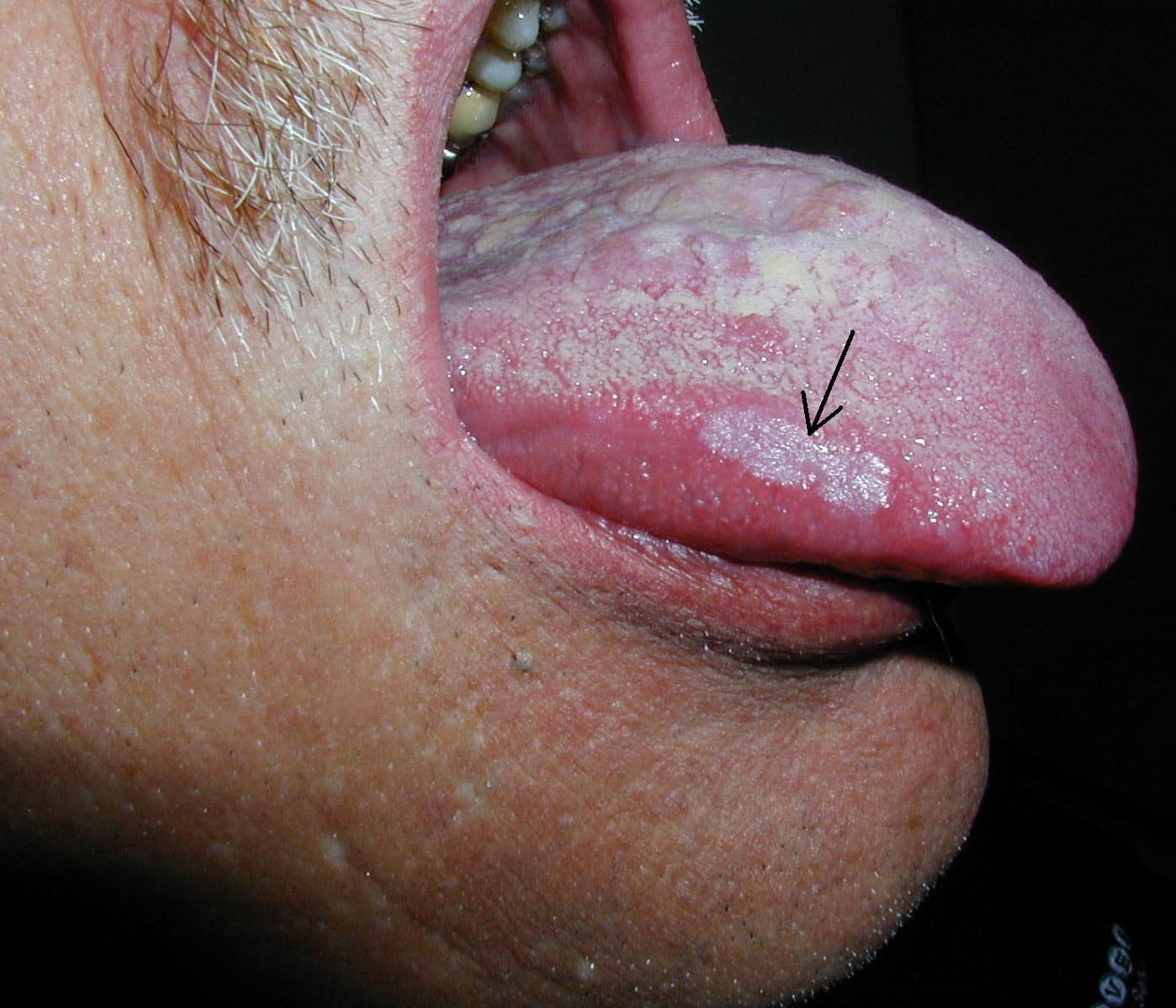

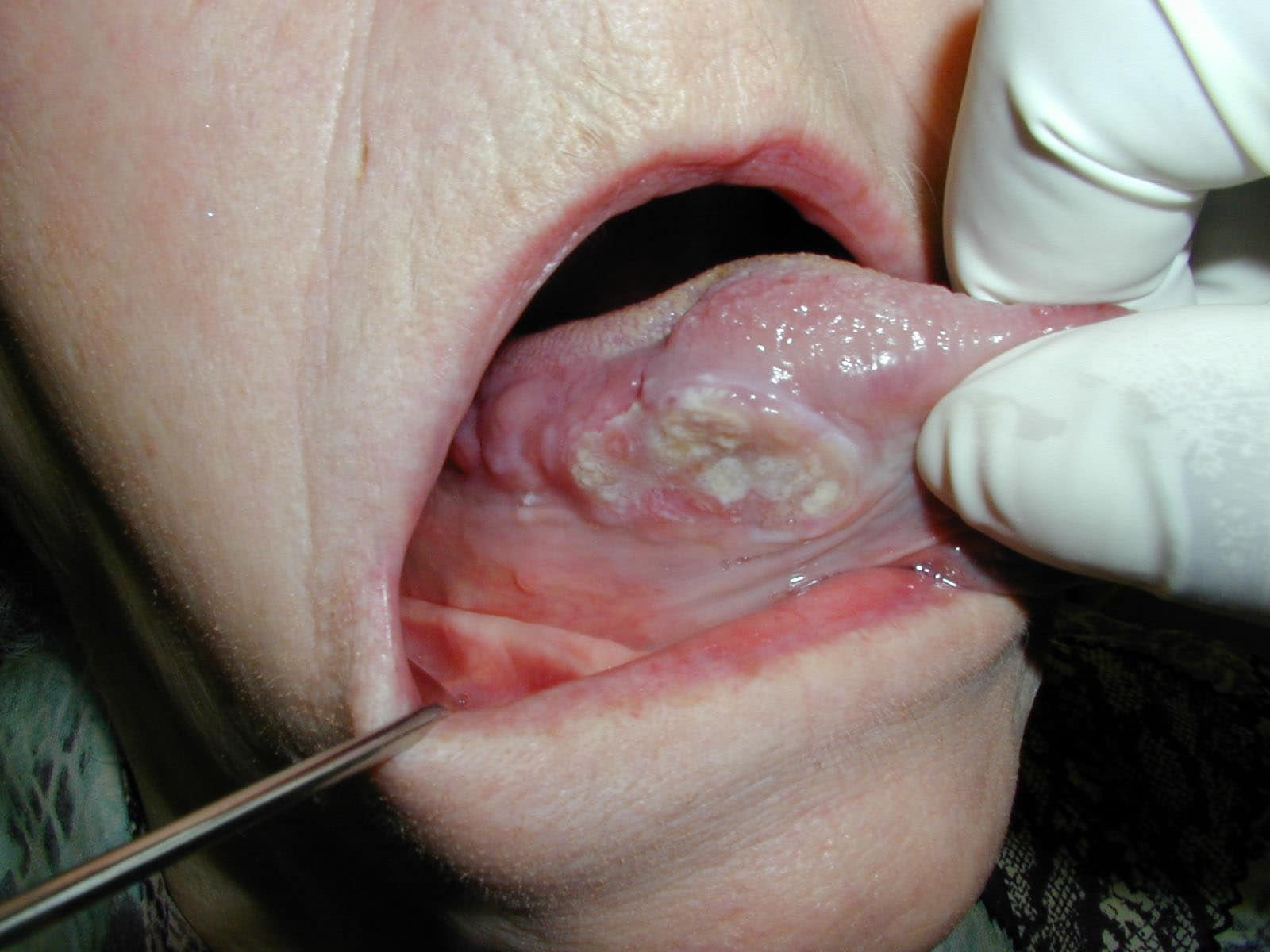
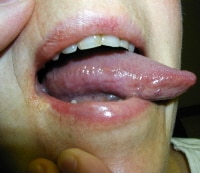


There is only one medicine for Burning Mouth Syndrome that is highly recommended by the physicians. This is named as burnical. It is made of totally herbal ingredients that never show any kind of negative effects on health or memory. It also reduces the problem of anxiety from the patient. The herbal ingredients of this medicine are Nutmeg, Spanish chamomile, Egg Shell Calcium, Coral calcium, Henbane, Indian Rennet, Cow hage, Wattle Bark, Cloves, African rue, Elephant Creeper and Cinnabar. The medicine is present at the Herbal Care Products.
Trả lờiXóaThe possible treatments of burning mouth syndrome are Anticonvulsant medication. The best possible treatment is present at Herbs Solutions By Nature by the name of Breneton. Herbal treatments have also been attempted with some success with Herbs Solutions By Nature.
Trả lờiXóahttp://www.herbs-solutions-by-nature.com/Burning-Mouth-Syndrome.php
All about burning mouth syndrome symptoms, causes and treatment. Dry Mouth Treatment and medication such as BURNICAL. Which is safe and effective for treat dry mouth naturally?
Trả lờiXóaToday, we will share to you some Burning Mouth Syndrome Home Remedies. Observe some characteristic solutions for burning tongue disorder. Aloe Vera, Mint Leaves, Margosa leaves, Avoid alcohol, Lavender oil, Baking soda, etc are some herbal home remedies for Burning Mouth Syndrome.
Trả lờiXóaBurning Mouth Syndrome treatment depends on the underlying causes. Burning Mouth Syndrome Herbal Treatment also available to release the symptoms of burning mouth syndrome.
Trả lờiXóaBurning Mouth Syndrome treatment depends on the underlying causes. Burning Mouth Syndrome Herbal Treatment also available to release the symptoms of burning mouth syndrome.
Trả lờiXóaBurning Mouth Syndrome treatment depends on the underlying causes. Burning Mouth Syndrome Herbal Treatment also available to release the symptoms of burning mouth syndrome.
Trả lờiXóaBurning mouth syndrome is a painful condition. It is describe by a painful burning sensation in the mouth, affecting the tongue, cheeks, palate, gum and lips. The eating of a proper diet and some natural remedies and Burning Mouth Syndrome Home Remedies can be followed to overcome this syndrome.
Trả lờiXóaHome Remedies for Burning Mouth Syndrome are all naturally extracted without any chemical added to them; therefore, they don’t carry any kind of side effects.
Trả lờiXóaBurning Mouth Syndrome Learn about the Symptoms, Causes and Diagnosis.Natural Treatment of Burning Mouth Syndrome by Herbal Product Breneton is better solution for mouth condition.
Trả lờiXóaBurning Mouth Syndrome Herbal Treatment Learn about the Symptoms, Causes and Diagnosis. Natural Treatment of Burning Mouth Syndrome by Herbal Product Breneton is better solution for mouth condition.
Trả lờiXóaNatural Remedies for Burning Mouth Syndrome may be a superior choice for a few, and these sorts of treatment regularly accompany scarcely any results, they can be utilized repeatedly to help How to Get Rid of Burning Mouth Syndrome at Home those with Burning Mouth Syndrome carry on with more comfortable lives. Perhaps the most intense natural treatment for BMS is cryotherapy, the utilization of Natural Remedies for Burning Mouth Syndrome to affect the body.
Trả lờiXóaHome Remedies can significantly reduce tremors, though Benign Essential Tremor cannot be cured overall. Natural Remedies for Benign Essential Tremor in hands, stress balls, or other consolidation exercises can relieve train muscles to decrease tremors in your hands. Buy Herbal Product for Benign Essential Tremor can also be things that are used for very different results in other patients.
Trả lờiXóaThank you for this excellent post. You have shared some really important points in this article for burning mouth. You can also checkout if you like CAN SENSE OF TASTE BE RESTORED
Trả lờiXóa